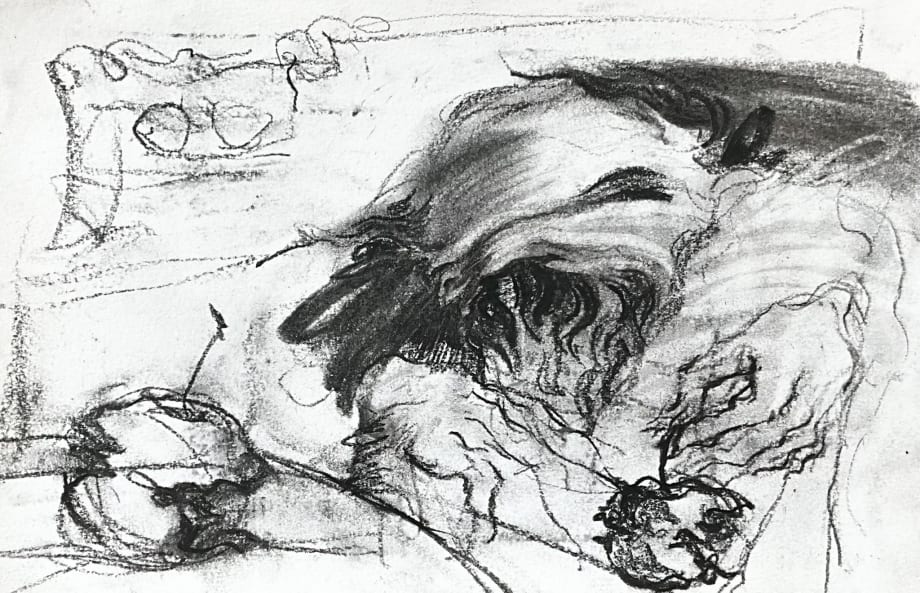Over the last year, Mayar Obeido has produced a large body of work that explores how ordinary objects are part of the interconnectedness of everyday life. Interested in the concept of change and the visual possibilities of documenting this process, Obeido explores how the passage of time can alter an object’s appearance and physical state, specifically something that is linked to one’s survival. As the monotony of daily routines causes us to interact and pay attention to the spaces and things that form reality, the artist encourages a deeper look into how we experience everyday objects as a means of understanding consciousness.
In his methodically drafted works, an apple on a table is shown in various stages, from harvest to decay, a cycle that symbolizes changes that are gradual yet significant. A lone figure or pair of androgynous figures are shown observing the apple as it undergoes this natural process. Contorted postures describe their intense state of focus, as though while observing the object they are also in the midst of slow transformation. Whereas figurative painting and drawing are typically understood as snapshots of a time and place, Obeido reimagines the compositional space as a site where images seem to evolve in real time. He achieves this sense of continuous motion by first covering his canvases with collaged newspapers that serve as a sort of timestamp, establishing context. Using charcoal, he then draws his riotous scenes over these textured surfaces. The paintings are finalized with atmospheric washes of acrylic paint that bring these disparate layers together while illuminating his darkened scenes. The resulting works are mixed-media paintings that are at once otherworldly and affecting.
Encountering these new works, the viewer will note that charcoal, despite being traditionally applied in drawing, has become the central medium of Obeido’s paintings. According to the artist, the medium allows him the freedom of a certain type of gestural and automatic figuration, one that is expressive yet lends to the detailing of volume and depth. Applied in paintings, charcoal linework replaces brushstrokes, which are then applied to the outer areas of the composition. This experimental approach to painting is indicative of the artist’s emphasis on a type of formalism that, like his imagery, is constantly evolving.
-- Maymanah Farhat

